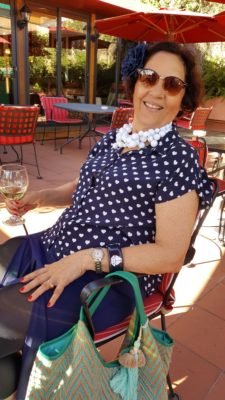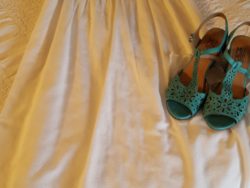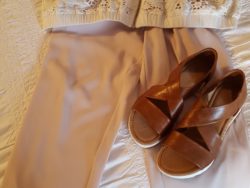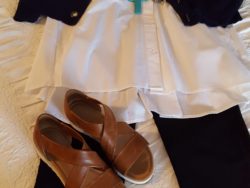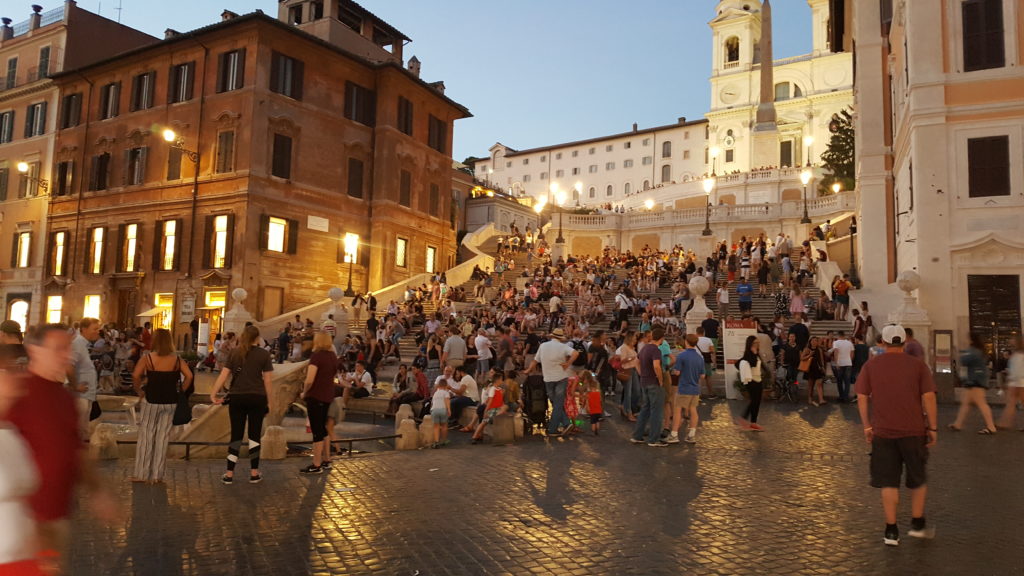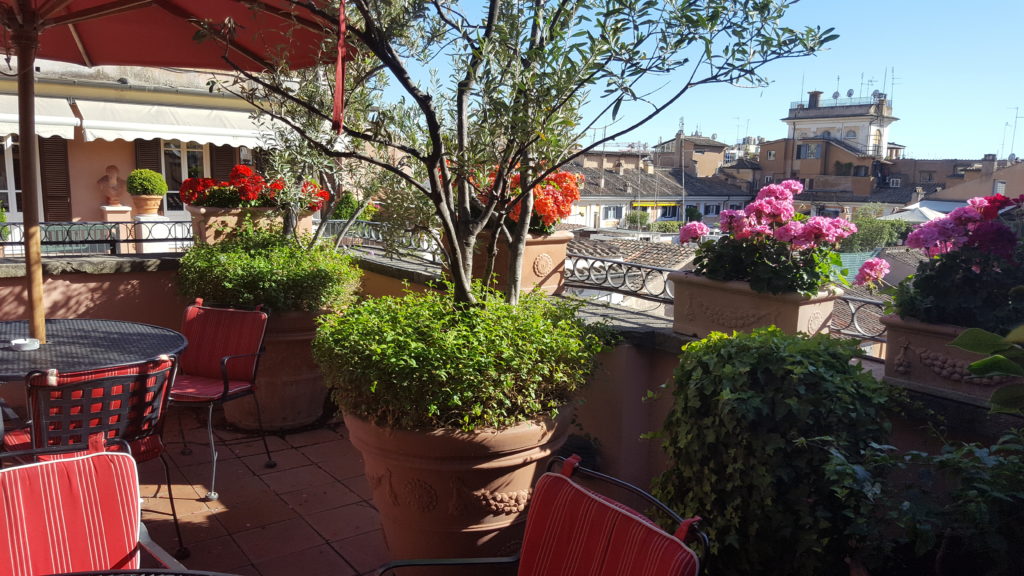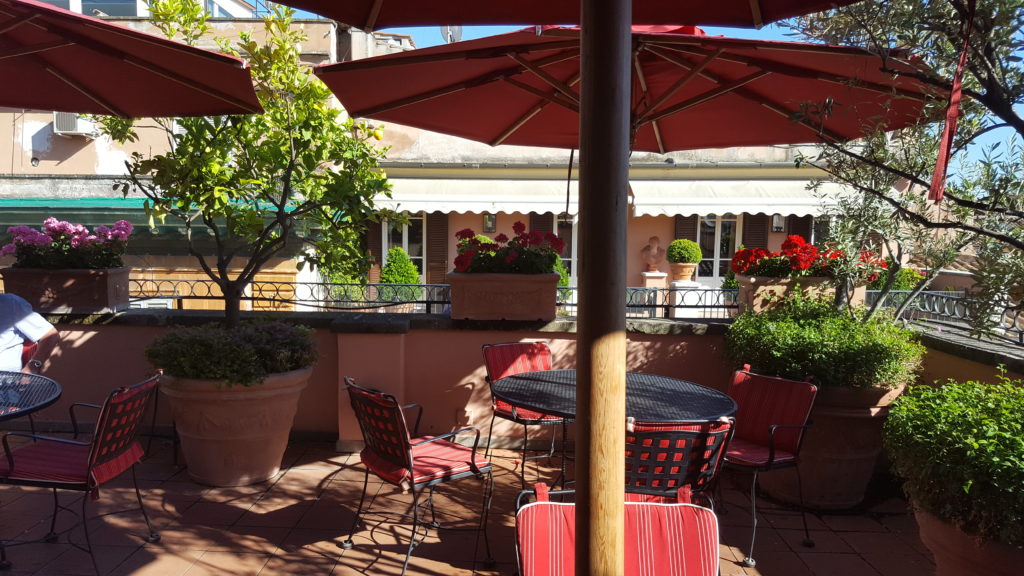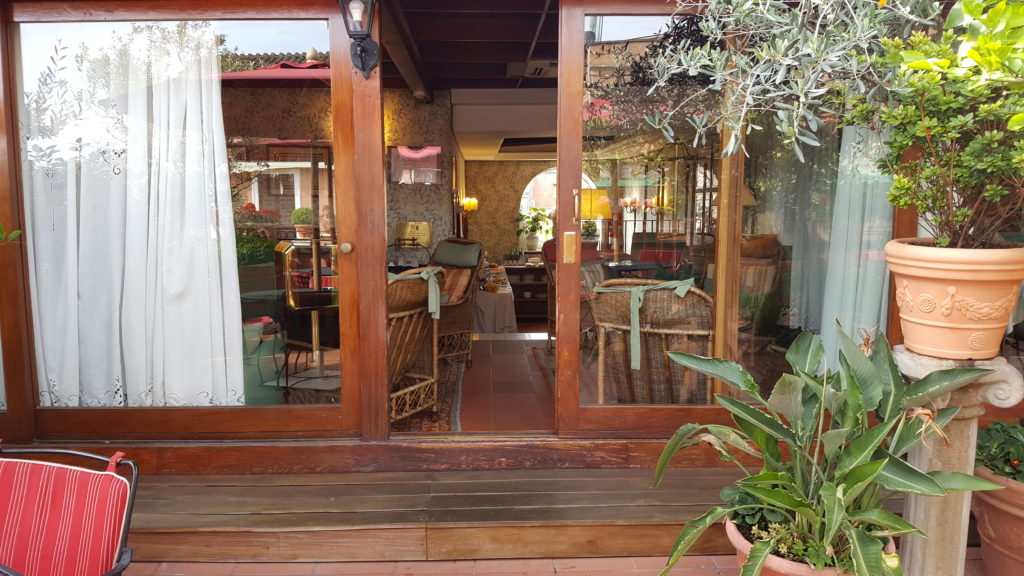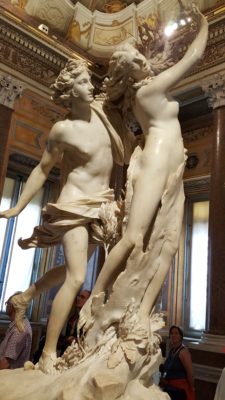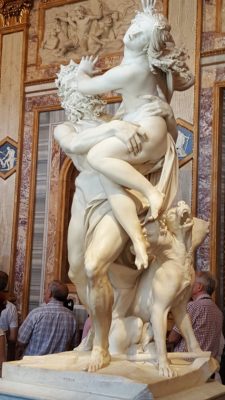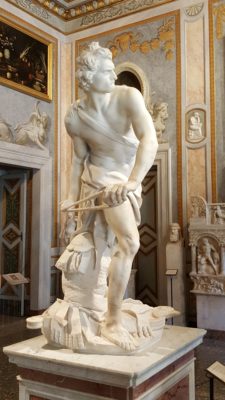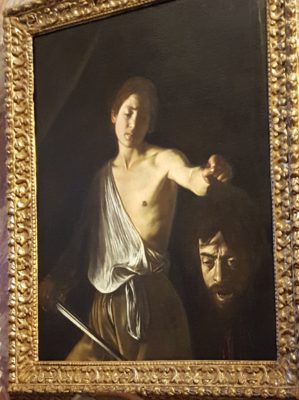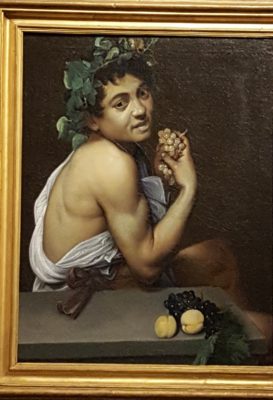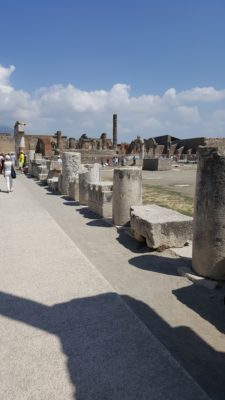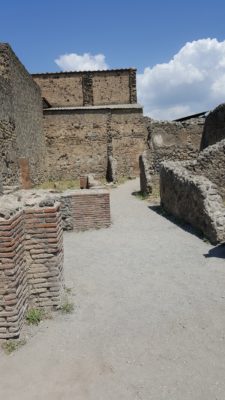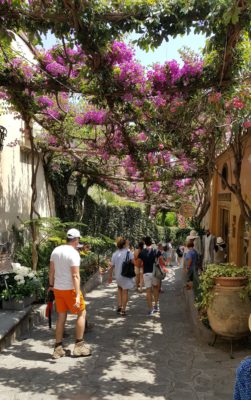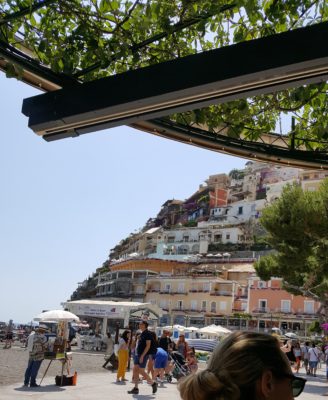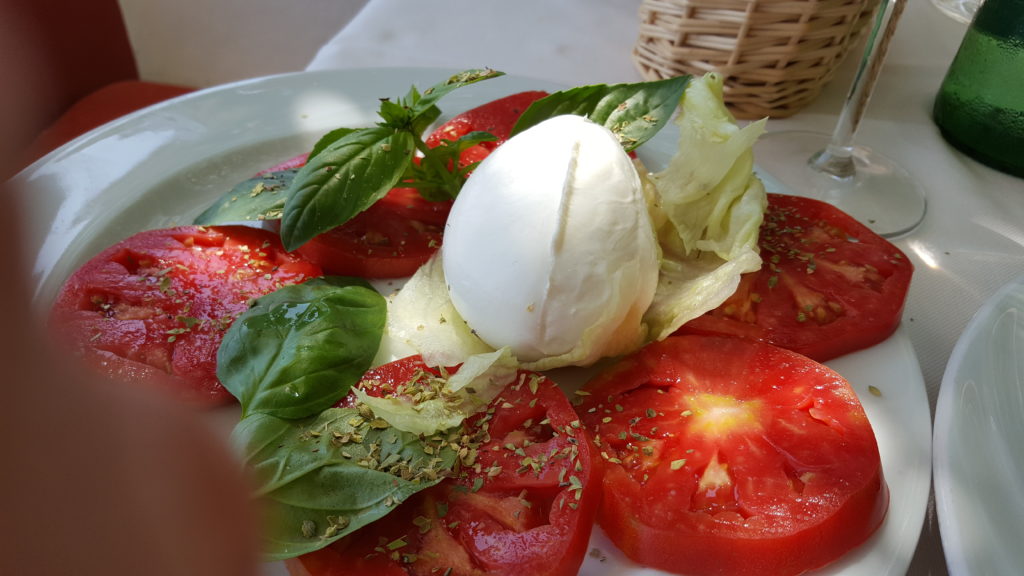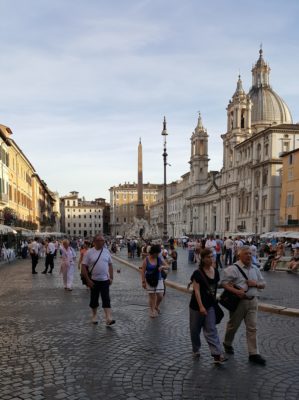Jack discovered a good deal on flights, and my birthday was coming up. June 6th to 11th meshed perfectly with our obligations: for Jack, the newly planted garden would need little care for the five days we’d be away; for me, two big events on my political calendar would be accomplished, and I’d be back in time for the next board meeting. So a celebratory trip to a favourite city was called for, secondo nostro.
For me, of course, style was front of mind when deciding my wardrobe. But the clothes had to keep me clad and cool in the hotter-than-usual weather forecasted for Rome and environs. And they had to be easy to pack. Choosing white, tan, turquoise and navy as my colour palette, I wore navy & white for our first happy hour on our hotel’s rooftop terrace, and then dinner at Ristorante al 34.
My wardrobe
Other outfits that kept me clad & cool:
Our Roman ‘home’
Inn at the Spanish Steps. Stylishly dressed for the Roman heat and ensconced in a luxurious hideaway in the heart of Rome, I was eager for another Roman adventure. We discovered the Inn at the Spanish Steps three years ago on my decade-change birthday trip, and we fell in love. A townhouse built in 1760 and once the home of Hans Christian Andersen, it is an oasis of comfort and privacy in the midst of the people and noise and excitement of the city’s centre.
The rooftop terrace. And its rooftop terrace is its pezzo forte: To start the day with breakfast in the clear, fresh morning air, and end it with a glass of wine in the hazy, lazy air of late afternoon shaded by lemon trees and umbrellas is so, so civilized. We sit back and smell the flowers spilling from urns and the fat lemons ripening on potted trees while we watch the birds wheel and dive in the summer sky. We chat a little, or not, and we are content.
Day 1: Borghese Gallery & Gardens
But we had places to go and things to see, so off we went to the Borghese Gallery & Gardens on our first day in Rome. The gallery is housed in the elegant mansion once owned by the Borghese family set on a hill in central Rome. Its sweeping lawns lead down to the gardens whose western edge is a terrace overlooking the Piazza del Popolo.
The jewels in its artistic crown are Bernini’s sculptures and Caravaggio’s paintings: Bernini’s sculptures fairly pulse with life in their portrayal of men and women in the flush of youthful beauty, with fingers pressed into the white-marble flesh and faces full of agony or ecstasy; in contrast, Caravaggio’s paintings are dark and dramatic, the faces and bodies emerging from the darkness—still young and beautiful, but with an undercurrent of foreboding. Ah, the pleasure of looking at beauty!
An inviting feature of the Borghese is its size—like a family home, albeit a grand family home, its treasures can be seen in the two hours allotted to
Day 2: Pompeii & Positano
Then to the sea, to the sea, to the beautiful sea on my birthday. We were up at dawn and on the street by 6:30 in the morning. The minivan pulled up and our guide & driver welcomed us and then four others (Americans as it happens) to our day tour, first to Pompeii, then to Positano and finally to the Amalfi coast. (Three destinations made too long a day for us; if we did it again, we’d book only two, allowing our usual day’s end: a glass of wine on the terrace before dining leisurely on a piazza watching Romans & friends stroll by. As it was, we got back to the hotel at 8:30 pm and then had a hurried pizza before falling into bed at 10.)
Pompeii. This ancient city, founded in the 600-500 BC, was utterly destroyed on August 24, 79 AD, when Mount Vesuvius erupted in a catastrophic explosion. Ash & pumice spilled down the mountain at 70 mph, burying the 2,000 people of this thriving Roman city in the midst of their lives. When Pompeii was rediscovered in 1748, it was like a time capsule of that era because the 16 feet of ash & pumice had preserved people, houses, temples and artifacts intact.
The sun burned down on us as we made our way around the site, guided by Hector to just a few of the major parts of this vast site. Rapidly wilting in the heat, I was saved by the sea breeze when we entered the forum—to the sea, to the sea, to the beautiful sea, indeed, in hot climes! As we made our way to points of interest, I’d nip back to the forum for a breath of sea air when the heat closed down thought, and I’d close my eyes to ‘see’ the forum full of people, animals, carts going about the daily life of Pompeii.
Positano – From ancient grey & brown to modern green & pink & red & blue just a few miles down the road. The pretty city of Positano has colour everywhere, with flowers spilling down walls and flourishing in pots of every size and description. We made our way down an enchanting street to the seaside, and sat down for lunch—my insalata caprese was luscious with tomatoes so full of sun that their flavour exploded in my mouth! The breeze cooled us, the beach life amused us, and the food & wine replenished us.
Then it was climbing back up the pretty street past shop after shop of beautiful wares: linen clothes made locally, colourful Italian dishes that make the simplest food look delicious, costume & precious jewellery, tablecloths & kitchenware. I wish I had had more time to shop and try on an exquisite blouse or two, but the van was ready for departure to our final stop. As I said, this would have been the perfect end to our tour, secondo nostro.
Day 3: the Eternal City
Breakfast on the terrace to fortify us for a morning on Via del Corso to window shop the designer stores and possibly buy in the 101 shops tucked away in interesting streets and allies flowing from Corso. Then lunch on the street watching the people parade, especially the abundance of beautiful young men & women immaculately groomed and fashionably dressed—naturally for me, a wonderful sight to see made more wonderful because it’s a rare one on our North American streets.
Sfortunamente, our plan to see the excavation of Nero’s palace that afternoon was not to be. We must have hailed the only cabdriver in Rome who had no idea where Domeo Aurea, the ticket office address, was. And being Roman & male, he protested mightily in Italian as he drove around trying to find the street. Finally, we said, “Basta!” and got out of the cab. We walked through the park toward the Colosseum and, lo and behold, there was the street—kitty corner from the Colosseum! But by that time, we were half an hour late for the English tour of the excavation, and the Spanish tour on offer would have left us in the dark—français, un peu; italiano, poco; mais/ma

